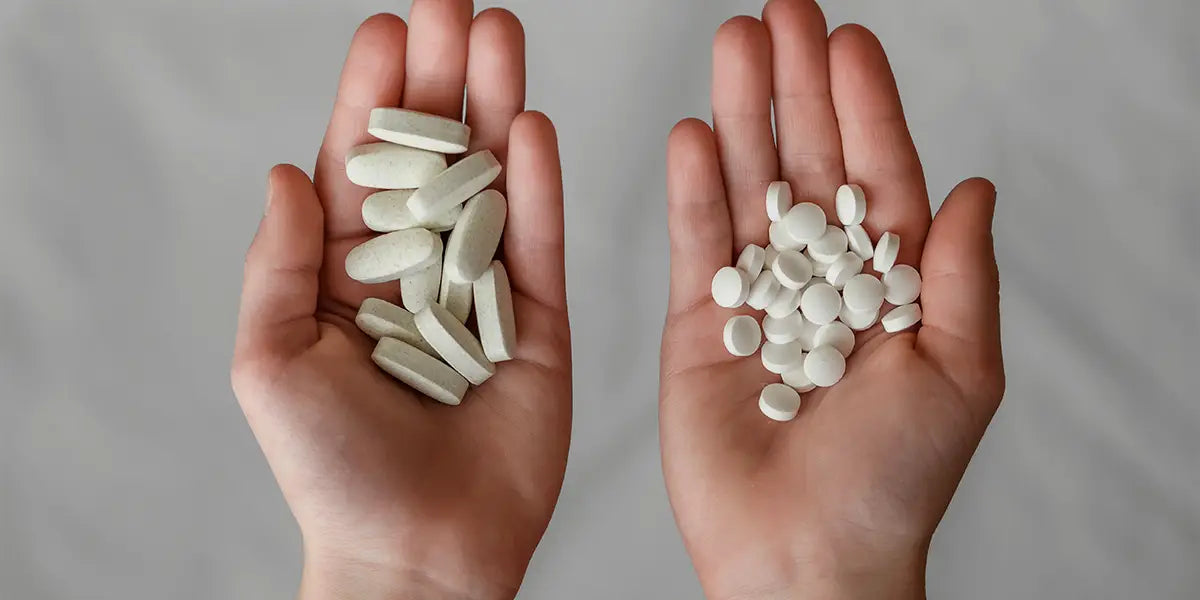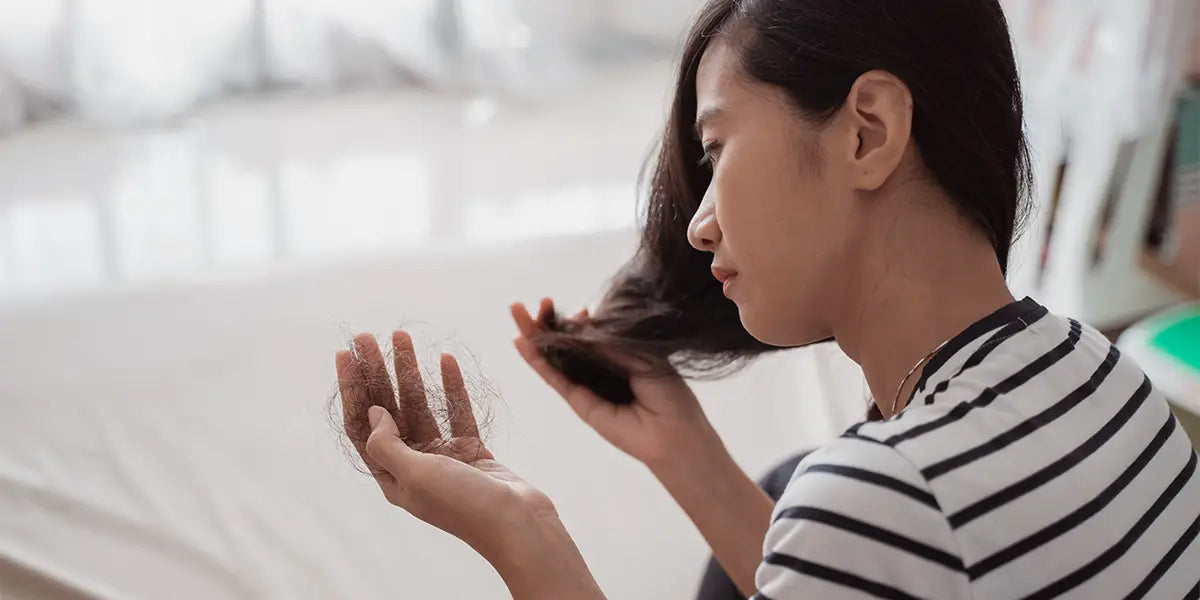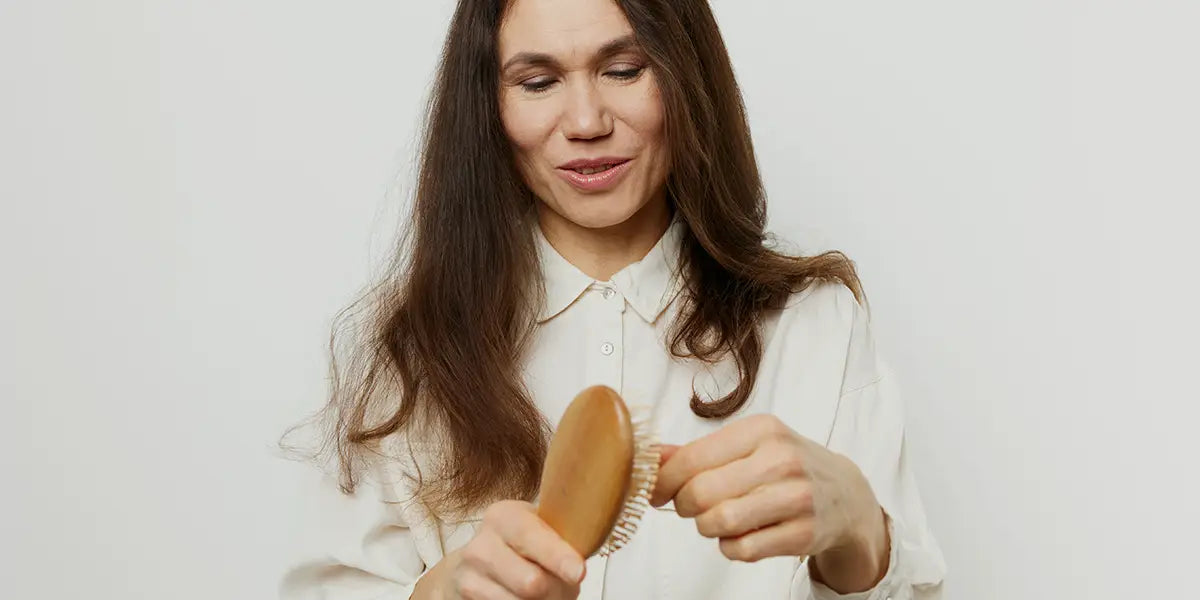Many people experiencing hair loss want to know if it's possible to use minoxidil and finasteride together and the answer is, yes. Here we'll examine why using finasteride and minoxidil together can improve your chances of stopping your hair loss and regrowing new, healthy hair.
Stopping hair loss and regrowing hair is a complex, coordinated process so the most effective treatment targets as many aspects of this process as possible. The treatments, finasteride and minoxidil, have been the subject of considerable research. In general, the data shows that using these two agents together can produce significantly better clinical outcomes than either of these treatments on their own.
The data that exists to support the combination of using finasteride and minoxidil for stopping hair loss, the best way to take these treatments together, and side effects are all complicated topics that we have done our best to simplify in the most readable and concise way possible.
Can you take finasteride and minoxidil together?
Yes, in fact, there is growing evidence to support using the therapies together to derive the most benefit when treating androgenetic alopecia. Here is how each of these medications works to improve hair growth.
Finasteride is a 5-alpha reductase inhibitor. It targets the hormonal cause of pattern hair loss, namely, high levels of the male sex steroid hormone dihydrotestosterone (DHT). Finasteride works by blocking the enzyme from transforming testosterone into DHT. Elevated DHT concentrations play a key role in the development of pattern hair loss in men.
In comparison, minoxidil is a vasodilator. This means that it primarily acts on the blood vessels to help increase blood circulation to the scalp and support the growth of hair through improved oxygen and nutrient exchange. It's also been suggested that minoxidil directly stimulates hair follicles to spend more time in the anagen (active growth) phase of the hair growth cycle.
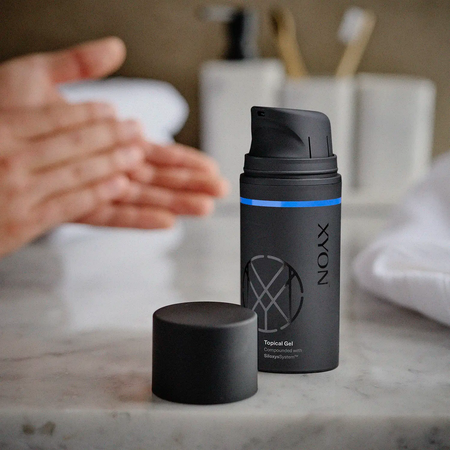
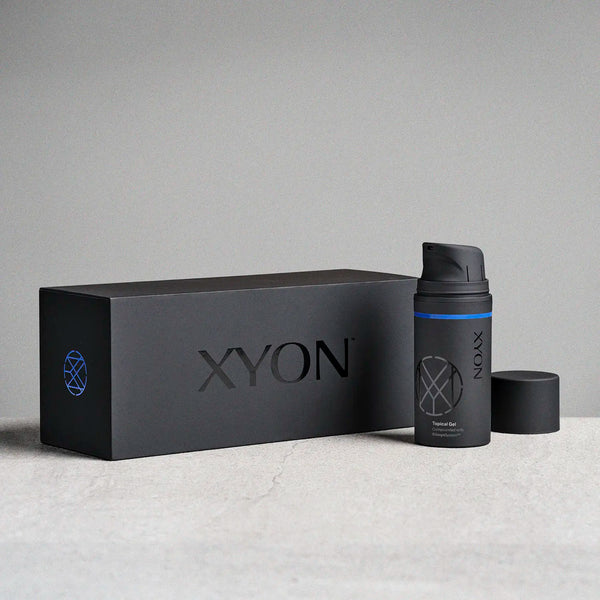
Finasteride + minoxidil in a gel you won't find anywhere else.
Tackle hair loss with a clinically proven combination, shown to help reverse signs of thinning.
Can you take oral minoxidil and finasteride together?
Yes, you can take oral minoxidil and finasteride together. We know that using these medications in combination can be more effective than taking minoxidil or finasteride alone. However, there is less agreement within the medical community about which forms of these medications to pair together. For example, some studies have examined the use of topical minoxidil together with oral finasteride, the original forms of these medications that were approved to treat pattern hair loss.
Now, oral minoxidil is being increasingly prescribed and of course topical compounded forms of finasteride are now readily available with a prescription, including XYON’s own formulations. Although these formulations are not formally approved by the FDA, newer formats of hair loss treatments are becoming available and research on these different combinations continues to grow.
How to reduce the risk of side effects.
One issue that comes up when combining medications is safety. Depending on your preferences and risk tolerance, you may be interested in forms of minoxidil and finasteride that can potentially reduce your risk of side effects. As an example, XYON’s combined Topical Finasteride and Minoxidil with SiloxysSystem™ Gel is applied directly to the skin and designed to limit systemic absorption of these ingredients. Systemic absorption occurs when taking any medication in pill form by delivering the medication through your bloodstream. By applying the medication to the scalp you are not only greatly reducing your risk of side effects, you're also getting the medication right to the source of the problem. With XYON you have the added benefit of delivering the most medication in topical form in a proprietary gel system that ensures the medication works over time and is as a result more effective.
Generally, topical delivery has been linked to reductions in side effects in various clinical studies of both finasteride and minoxidil. If you’re already taking one of these hair loss treatments and want to add the other to your hair growth routine, we recommend consulting with either a XYON specialist physician or your doctor.
Applying finasteride and minoxidil
We often get questions about the correct way to apply Topical Finasteride, with SiloxysSystem™ Gel, if you’re already using a topical minoxidil treatment, such as Rogaine®. We generally recommend that topical minoxidil be applied first, followed by topical finasteride. This is because SiloxysSystem™ Gel should sit undisturbed on the skin for 4-8 hours to allow finasteride enough time to penetrate the scalp skin.
Effectiveness of combining finasteride and minoxidil for hair loss
Preliminary research on finasteride and minoxidil combination therapy has shown that the duo is significantly more effective than either of these treatments on their own.
One clinical study found that in a 24 week double blind test on 40 men between the ages of 18 and 60, topical finasteride in a 0.25% formula combined with 3% minoxidil outperformed using minoxidil alone for hair density, growth, and overall hair loss prevention. An impressive 90% of men from this group experienced significant improvement in hair growth with no side effects reported. The formula was applied twice a day for 24 weeks. The researchers pointed out that it has previously been established that topical application of 0.25% finasteride could result in a nearly 9-fold lower plasma (blood) exposure to finasteride compared to the oral medication which may have helped in the lack of side effects. (Suchonwanit et al., 2018).
Another large study conducted in 2015 compared taking finasteride (1 mg) and topical minoxidil (5%) monotherapies to taking these agents together. In total, 450 male participants were enrolled and 160 of these participants were assigned the combination treatment. Results showed that taking finasteride and minoxidil together resulted in earlier visible improvement in hair growth (as early as 3 months into treatment) (Hu et al., 2015).
Several years later, another 2019 study examined the efficacy of a topical solution containing 0.25% finasteride and 3% minoxidil, compared to topical 3% minoxidil on its own. Investigators found that both treatments improved both hair density and the size of the hair, but that the combination treatment was superior to only using minoxidil in improving hair growth. (Suchonwanit et al., 2019).
In 2023, a study showed that treating male pattern hair loss with topical 0.25% finasteride and 5% minoxidil could create consistent and sustainable improvement in stopping hair loss (measured by total hair density and hair volume) over the course of 24 weeks of treatment. Interestingly, treatment with topical finasteride alone resulted in improvements in hair loss in the first 12 weeks of treatment, followed by a plateau in growth, while treatment with topical minoxidil alone resulted in visible improvements only after 12 weeks of treatment and an initial period of increased hair loss (Bharadwaj et al., 2023).
Finasteride and minoxidil side effects
Based on available literature and data, finasteride and minoxidil are generally well-tolerated medications. In the small percentage of men and women who experience side effects, most are mild and resolve with discontinuation of the medication.
The 2015 study that enrolled 450 participants reported an overall side effect rate in finasteride-treated group as 1.8%, with 1.5% representing sexual side effects such as decreased libido, sexual dysfunction and testicular pain. This contrasts with 6.1% of participants assigned to topical minoxidil only, who reported scalp irritation (contact dermatitis). (Hu et al., 2015).
The 2019 study that examined a combined topical treatment of 0.25% finasteride and 3% minoxidil over 24 weeks reported no systemic side effects, but researchers did note a significant decrease in blood dihydrotestosterone (DHT) levels. This is of course consistent with the mechanism of action of finasteride, since the medication works to block production of DHT. (Suchonwanit et al., 2019).
More recently, a 2023 study that also compared the use of minoxidil and finasteride monotherapies against topical 0.25% finasteride in combination with 5% minoxidil in 60 male participants found that none of the participants experienced sexual side effects. However, there were reports of scaling, increased hair loss, dryness, itching and headache during the first 3 months of treatment amongst 15 participants that received either minoxidil on its own, or minoxidil and finasteride (Bharadwaj et al., 2023).
Shedding after starting hair loss treatment?
In the study above, some participants experienced increased hair loss while taking finasteride and minoxidil. It's not uncommon for people to experience a temporary increase in shedding after starting a new hair loss medication. This finasteride shedding, or even minoxidil-induced telogen effluvium (minoxidil shedding) isn’t usually cause for concern and shedding should resolve within a few months.
Finasteride and minoxidil: Side effects for women
Female pattern hair loss can be treated with either finasteride or minoxidil, or both medications at the same time. However, there are important special safety considerations for women who are pre-menopausal, who are trying to conceive, are pregnant or breastfeeding.
In animal studies, finasteride has been associated with developmental abnormalities. For this reason, women who are pregnant and/or breastfeeding or actively trying to become pregnant must not take finasteride for hair loss. You can learn more about this issue by visiting our articles on the side effects of finasteride in women and finasteride and pregnancy.
Similarly, since minoxidil can affect the circulatory system and cause changes in blood pressure, women who are pregnant are advised to avoid minoxidil. It is unclear whether minoxidil may cross into breastmilk, women who are nursing should also avoid using minoxidil.
Women who are pre-menopausal and not intending to become pregnant may want to discuss their options with a doctor.
Finasteride and minoxidil for hair loss: Takeaway
On their own, both finasteride and minoxidil have been shown to be effective in treating pattern hair loss. More recently, research has examined the use of these agents in combination with each other, in various forms. While more data is needed, preliminary findings suggest that combination therapy may be more effective, with no obvious increase in the risk of side effects. If you’re already taking one of these treatments for hair loss, you may consider talking to your doctor or a connecting with a specialist physician available through XYON about adding either finasteride or minoxidil to optimize your hair growth treatment.
1. Suchonwanit, P., Srisuwanwattana, P., Chalermroj, N., & Khunkhet, S. (2018).
A randomized, double-blind controlled study of the efficacy and safety of topical solution of 0.25% finasteride admixed with 3% minoxidil vs. 3% minoxidil solution in the treatment of male androgenetic alopecia.
Journal of the European Academy of Dermatology and Venereology, 32(12), 2257-2263.
https://doi.org/10.1111/jdv.15171
2. Suchonwanit, P., et al. (2019).
Efficacy of topical combination of 0.25% finasteride and 3% minoxidil versus 3% minoxidil solution in female pattern hair loss: A randomized, double-blind, controlled study.
American Journal of Clinical Dermatology, 20(1), 147-153.
https://doi.org/10.1007/s40257-018-0387-0
3. Hu, R., Xu, F., Sheng, Y., Qi, S., Han, Y., Miao, Y., Rui, W., & Yang, Q. (2015).
Combined treatment with oral finasteride and topical minoxidil in male androgenetic alopecia: A randomized and comparative study in Chinese patients.
Dermatology and Therapy, 28(5), 303-308.
https://doi.org/10.1111/dth.12246
4. Bharadwaj, A. V., Mendiratta, V., Rehan, H. S., & Tripathi, S. (2023).
Comparative efficacy of topical finasteride (0.25%) in combination with minoxidil (5%) against 5% minoxidil or 0.25% finasteride alone in male androgenetic alopecia: A pilot, randomized open-label study.
International Journal of Trichology, 15(2), 56-62.
https://doi.org/10.4103/ijt.ijt_72_22

